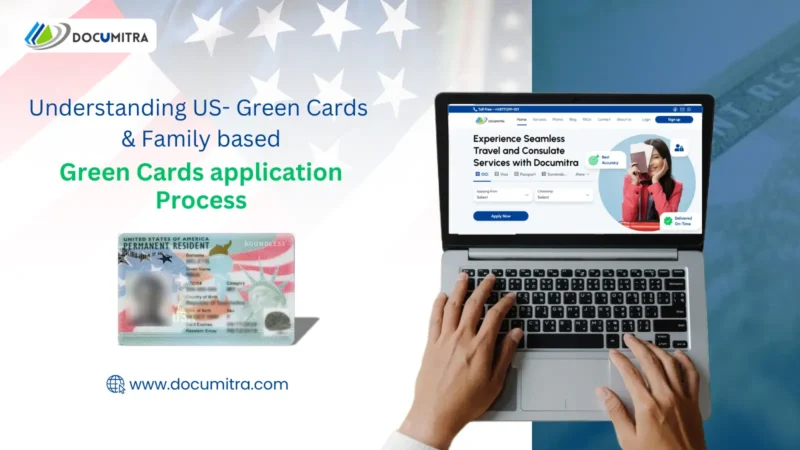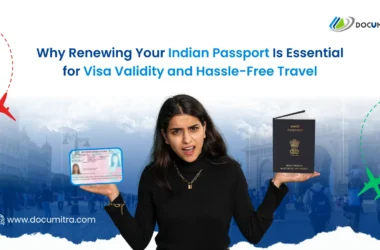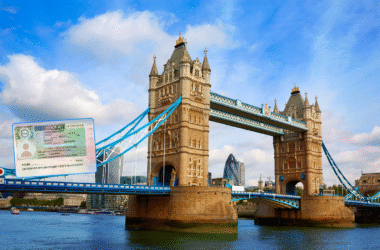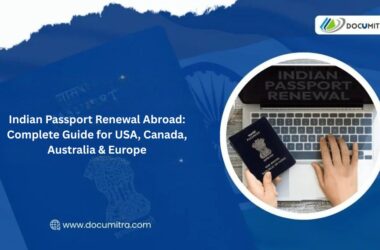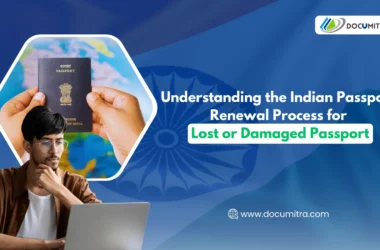The Green Card in the American immigration context stands for a great deal, promising to grant a sense of community and the ability to prosper in the United States. But, how, in particular, is the Green Card defined, and what is the procedure to get it? Now let’s delve into the core of U.S. Green Cards with Documitra’s comprehensive guide, discovering the different types and routes that are available to you.
Understanding The Green Card:
Let’s start with the basics; a Green Card, which is also known as a permanent resident card, is a document that symbolizes the legal residency status in the United States. This gives you the opportunity to be a legal resident and pursue employment for as long as you desire, enabling you to seize different prospects. Nevertheless, the possession of a Green Card doesn’t guarantee you an instantaneous citizenship status.
Types Of Green Cards:
1. Family-Based Green Cards:
These Green Cards are issued to the immediate relatives of U.S. citizens and permanent residents and contribute to the process of family reunification. Immediate relatives are spouses, both parents, unmarried children, siblings, as well as widows/widowers of the U.S. citizens.
2. Humanitarian Green Cards:
Such humanitarian Green Cards target people suffering from exceptional situations such as refugees, asylum seekers; victims of domestic abuse, victims of crime and human trafficking. These categories are meant for people who are in dire need of protection and are the route to legal residence in the US.
3. Employment-Based Green Cards:
If you have the technical skills or special knowledge, employment-based Green Cards are the way to permanent resident status. Masters and PhDs, skilled workers, investors, talents of extraordinary ability, and US employers can sponsor them.
4. Diversity Lottery Green Cards:
The Diversity Visa Lottery, or the Green Card lottery, provides an opportunity for individuals who originally come from the countries with low immigration rates to be eligible for a permanent residency in the U.S. A smaller amount of visas are allocated annually through a random selection process.
5. Longtime Resident Green Cards:
These Green Cards are issued to individuals who have resided in the U.S. for a long time and who have obtained their residency through the permit registry. The Green Cards are valid for the whole lifetime and can be given to the people who have lived in the country since January 1, 1972.
Family based Green Card Application Process:
The process for applying for a Green Card varies depending on whether you’re inside or outside the US. There are two main application forms:
-
Green Card application (inside the US): Form I-485 (Application to Adjust Status). This is for people already in the US on a nonimmigrant visa, selected for a diversity visa, or eligible through family or employment.
-
Green Card application (outside the US): Form DS-260 (Immigrant Visa Electronic Application). This is for those seeking an immigrant visa from abroad, through family, employer sponsorship, or the diversity visa program.
Types Of Family Green Cards:
There are different types of family Green Cards, depending on the status of your family member living in the US. If your family member is a US citizen, the following visa types apply:
-
IR-1 visa for the spouse of a US citizen
-
IR-2 visa for unmarried children under 21 years old of a US citizen
-
IR-3 visa for children adopted abroad by a US citizen
-
IR-4 visa for children to be adopted within the US by a US citizen
-
IR-5 visa as a Green Card for parents of US citizens who are at least 21 years old.
Eligibility For Family Based Green Card:
-
Close relatives of U.S. citizens and Green Card holders can apply for family-based Green Cards.
-
Eligible family members include spouses, children, parents, and siblings, along with spouses and children of those relatives, adult children, and siblings.
-
Widows and widowers married to a U.S. citizen at the time of the citizen’s death may also apply.
-
Applicants must prove the authenticity of their marriage.
-
Extended family members like cousins, aunts, uncles, and grandparents generally do not qualify.
-
They may be eligible if they have a closer relative who is a U.S. citizen or Green Card holder, or if they qualify for other types of Green Cards.
Eligibility For Family-Based Green Card Sponsorship:
-
Establish a close family relationship with the visa beneficiary in the listed categories.
-
Maintain principal residence in the United States.
-
Demonstrate financial ability to support sponsored family members.
-
Sign an affidavit of support showing income at least 125% of the Federal Poverty Guidelines.
Preference Categories:
U.S. immigration law offers pathways for certain noncitizens to obtain lawful permanent residence (Green Card) based on family relationships:
-
Immediate Relatives of U.S. Citizens: Spouses, minor children, or parents of U.S. citizens.
Preference Immigrant Categories:
-
First preference (F1): unmarried sons and daughters (21 years and older) of U.S. citizens.
-
Second preference (F2A): spouses and unmarried children (under 21) of lawful permanent residents.
-
Second preference (F2B): unmarried sons and daughters (21 and older) of lawful permanent residents.
-
Third preference (F3): married sons and daughters of U.S. citizens.
-
Fourth preference (F4): brothers and sisters of U.S. citizens (if the U.S. citizen is 21 and older).
What Is Adjustment Of Status?
Limited to certain immigrants already in the US, mainly immediate relatives of US citizens.
Requires a valid nonimmigrant visa and lawful entry.
-
Example: A foreign student marrying a US citizen can adjust their status if they are still on a valid student visa.
-
Chinese parent(s) of a US citizen with a tourist visa can relocate permanently and adjust status.
Adjustment Of Status Forms:
-
Package involves the concurrent filing of several forms with USCIS.
Forms submitted together:
-
Form I-485, Application to Adjust Status
-
Form I-130, Petition for Alien Relative
-
Form I-130A, Supplemental Information for Spouse Beneficiary (if spouse)
-
Form I-864, Affidavit of Support
-
Form I-693, Report of Medical Examination and Vaccination Record
-
Form I-765, Application for Employment Authorization (optional)
-
Form I-131, Application for Travel Document (optional)
Step 1: Petition:
-
A US citizen or LPR petitions a family member to USCIS.
-
After approval, a family member abroad applies at the US Embassy or Consulate in their home country.
-
File Form I-130, Petition for Alien Relatives, with USCIS.
-
Pay the required fee for petition processing.
Step 2: Fill Forms:
-
If approved, the petition is forwarded to the National Visa Center (NVC). NVC sends a package with instructions, a case number, and an invoice ID to an applicant in a foreign country.
-
The applicant applies for an IR-2 visa at the US Embassy or Consulate in their home country.
-
For immediate relative visas, there is no waiting time; the applicant can start the process immediately.
-
File Form DS-260, Immigrant Visa Electronic Application, through NVC.
-
Attach the confirmation page and number from the DS-260 form to supporting documents.
Step 3: Medical Examination And Interview:
-
Undergo a medical examination and receive the required vaccinations.
-
Attend a Green Card interview; the consulate will notify you of the date and location after form submission.
-
Receive an immigrant visa packet upon approval after interview, allowing travel to the U.S.
-
Travel to the U.S.; the visa packet from the embassy is for travel permission only.
Step 4: Apply For Immigrant Visa In Home Country (Outside The Us):
1. Obtain visa number from Department of State.
2. Schedule immigrant visa interview appointment at nearest US Consulate in home country.
3. Fulfill immigrant visa requirements, including medical examination, fingerprinting, etc.
4. Obtain visa stamp and purchase ticket to the United States.
5. Await arrival of Green Card.
6. Apply for social security upon arrival in the US.
Note: Our dedicated team can help you with the proper and form filling fee payment if you choose to apply through Documitra
What Are The Required Documents?
Documents:
-
Passport valid for at least six months beyond the intended date of entry into the U.S.
-
Affidavit of support
-
Birth certificate
-
Marriage certificate, if applicable
-
Marriage termination documentation, if applicable
-
Immigration medical examination form
-
Two passport photographs
Note: Our dedicated team can help you with the proper document list if you choose to apply through Documitra.
What Is The Fees Required?
Fees:
Government filing fee for family-based Green Cards:
-
Applicant applying from within the United States: $1760
-
Applicant living outside the United States: $1200
Fees Is Required For:
-
Form I-130 filing fee
-
Processing fee for Form DS-260
-
Medical examination and vaccination fees
-
Fees for obtaining and translating supporting documents
-
USCIS Immigrant Fee, payable after receiving a visa and before traveling to the US, is mandatory for Green Card issuance.
In conclusion, the application process doesn’t have to be a puzzle. With our interactive guide, we’ve have tried to simply steps to ensure a seamless process for you. You can follow it for a complete Do-It-Yourself experience.
But if you want to have a hassle-free experience of application, Choose Documitra! We will take care of your application needs and our expert team will guide you through it, ensuring a higher chance of success.

